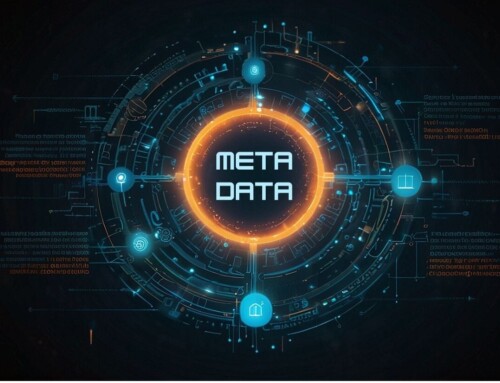The intricate web of regulations governing industries demands meticulous attention, and failure to adhere can result in hefty fines, legal ramifications, and tarnished reputations. Amid this landscape, document scanning has emerged as a critical tool in the compliance arsenal. By digitizing and managing documents with precision, businesses can navigate the complexities of regulatory adherence with confidence and efficiency.
Understanding Compliance Requirements
Compliance regulations such as the General Data Protection Regulation (GDPR), Health Insurance Portability and Accountability Act (HIPAA), and Sarbanes-Oxley Act (SOX) mandate stringent controls over data handling and documentation. These laws are designed to protect sensitive information, ensure transparency, and maintain data integrity across various sectors. However, the sheer volume of paperwork involved in compliance can be overwhelming.
The Role of Document Scanning in Compliance
Document scanning software plays a pivotal role in transforming compliance from a daunting task into a manageable process. By converting paper documents into digital formats, businesses can enhance security, improve accessibility, and streamline audit processes. Here’s how document scanning software can significantly boost your compliance efforts:
1. Secure Document Capture and Storage
Document scanning software ensures that sensitive information is captured securely and stored in encrypted digital formats. This reduces the risk of data breaches and unauthorized access, a critical requirement under regulations like GDPR and HIPAA. Secure storage solutions often include encryption, password protection, and access controls to safeguard data integrity.
2. Enhanced Document Retrieval and Auditability
Digital documents are easier to organize, search, and retrieve compared to their paper counterparts. This efficiency is crucial during audits when quick access to specific documents can make the difference between smooth operations and significant delays. Document scanning software typically includes robust search functionalities, enabling businesses to locate necessary documents swiftly.
3. Automation and Workflow Efficiency
Automation is at the heart of modern compliance strategies. Document scanning software can automate repetitive tasks such as filing, categorizing, and routing documents. This not only speeds up the process but also minimizes the risk of human error. Automated workflows ensure that documents are consistently processed according to predefined rules, maintaining compliance effortlessly.
Key Features of Document Scanning for Compliance
Advanced document scanning software offers a plethora of features designed to support regulatory adherence:
Optical Character Recognition (OCR) and Zonal OCR
OCR technology converts scanned images into searchable text, facilitating quick data retrieval and analysis. Zonal OCR enhances this capability by allowing specific zones on a document to be targeted for data extraction, improving accuracy and efficiency.
Barcode Detection and Metadata Tagging
Barcodes and metadata tagging streamline document categorization and indexing. By automatically recognizing and processing barcodes, document scanning software can categorize documents, making it easier to track and retrieve them for compliance purposes.
Automated Workflows
Automation reduces human error and ensures consistency in document processing. Document scanning software can be configured to automatically perform tasks such as filing, tagging, and routing documents to appropriate folders, significantly reducing manual intervention.
Integration with Cloud Storage and CRM Systems
Document scanning software that integrates with cloud storage solutions like Box, SharePoint, and Google Drive, as well as CRM systems like Salesforce, ensures seamless data management. This integration allows for easy access, sharing, and collaboration, while maintaining compliance with data protection regulations.
Audit Trails and Reporting
Comprehensive audit trails and reporting features are essential for demonstrating compliance. Document scanning software can log every action taken on a document, from its creation to any modifications and access attempts. These logs are invaluable during audits, providing a transparent record of document handling.
Implementing a Compliance-Focused Document Scanning Strategy
To fully leverage the benefits of document scanning software for compliance, businesses should adopt a strategic approach:
Assessing Your Needs
Begin by evaluating your organization’s specific compliance requirements. Identify critical documents and processes that need to be digitized. Understanding the scope of your compliance needs will help in selecting the right document scanning solution.
Choosing the Right Technology
Select document scanning software that aligns with your compliance goals. Look for features such as encryption, access controls, and integration capabilities with existing systems like CRM and ERP solutions. The right software should not only digitize documents but also enhance security and accessibility.
Integration with Existing Systems
Ensure that the chosen document scanning software integrates seamlessly with your existing document management systems and cloud storage solutions such as Box, SharePoint, and Google Drive. This integration is essential for maintaining data consistency and ensuring that all documents are accessible and secure.
Best Practices for Maintaining Compliance with Document Scanning
Adopting best practices can further enhance your compliance efforts:
Regular Audits and Reviews
Conduct regular audits to ensure ongoing compliance. Utilize document scanning software’s audit trails and reporting features to monitor document handling and identify any discrepancies.
Training and Awareness
Educate your employees about compliance requirements and the role of document scanning software in meeting these requirements. Regular training sessions can help ensure that all staff members are aware of best practices and procedures.
Continuous Improvement
Stay proactive by continuously improving your compliance processes. Keep abreast of regulatory changes and update your document scanning practices accordingly. Regularly review and refine your workflows to ensure maximum efficiency and compliance.
Benefits of Compliance through Document Scanning
Leveraging document scanning software for compliance offers numerous benefits:
Risk Mitigation
By ensuring that documents are securely captured, stored, and managed, businesses can significantly reduce the risk of non-compliance, penalties, and legal issues.
Operational Efficiency
Document scanning software streamlines document management processes, reducing manual work and improving accuracy. This efficiency translates to cost savings and better resource allocation.
Enhanced Reputation
Demonstrable compliance builds trust with clients, partners, and regulators. By showcasing a commitment to regulatory adherence, businesses can enhance their reputation and foster long-term relationships.
Future Trends in Compliance and Document Scanning
The future of compliance and document scanning is promising, with several emerging trends set to revolutionize the industry:
AI and Machine Learning
Artificial intelligence and machine learning technologies can enhance compliance by providing advanced data analysis and anomaly detection capabilities. These technologies can identify patterns and deviations that may indicate compliance issues.
Blockchain for Document Integrity
Blockchain technology offers a secure and transparent method for verifying document integrity. By ensuring that documents are tamper-proof and traceable, blockchain can enhance trust and reliability in compliance processes.
Regulatory Technology (RegTech)
RegTech solutions are emerging as powerful tools for automating compliance management. By integrating with document scanning software, RegTech can streamline regulatory reporting, monitoring, and compliance checks.
Conclusion
In the ever-evolving regulatory landscape, maintaining compliance is a continuous challenge. However, with the right document scanning software, businesses can transform this challenge into an opportunity for efficiency and excellence. By digitizing documents and automating processes, organizations can ensure secure, accurate, and compliant document management, paving the way for sustained success and peace of mind.






